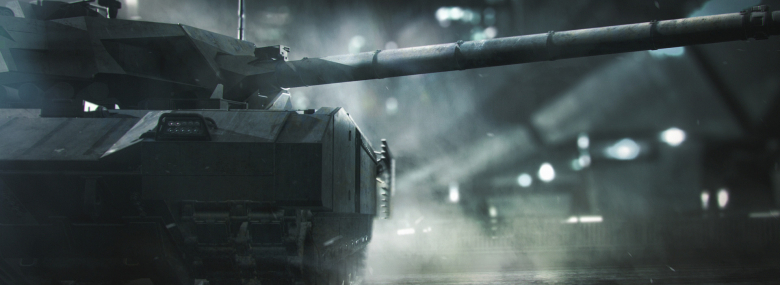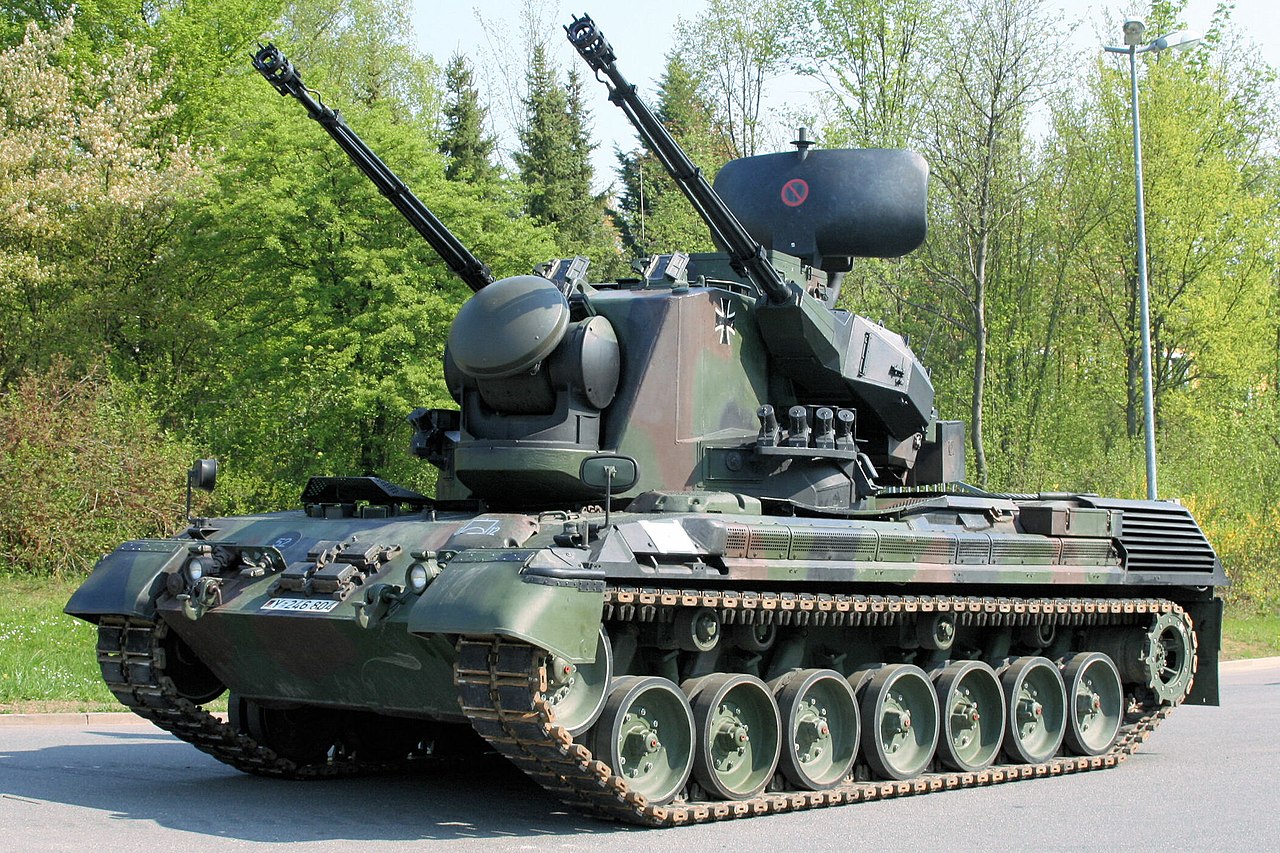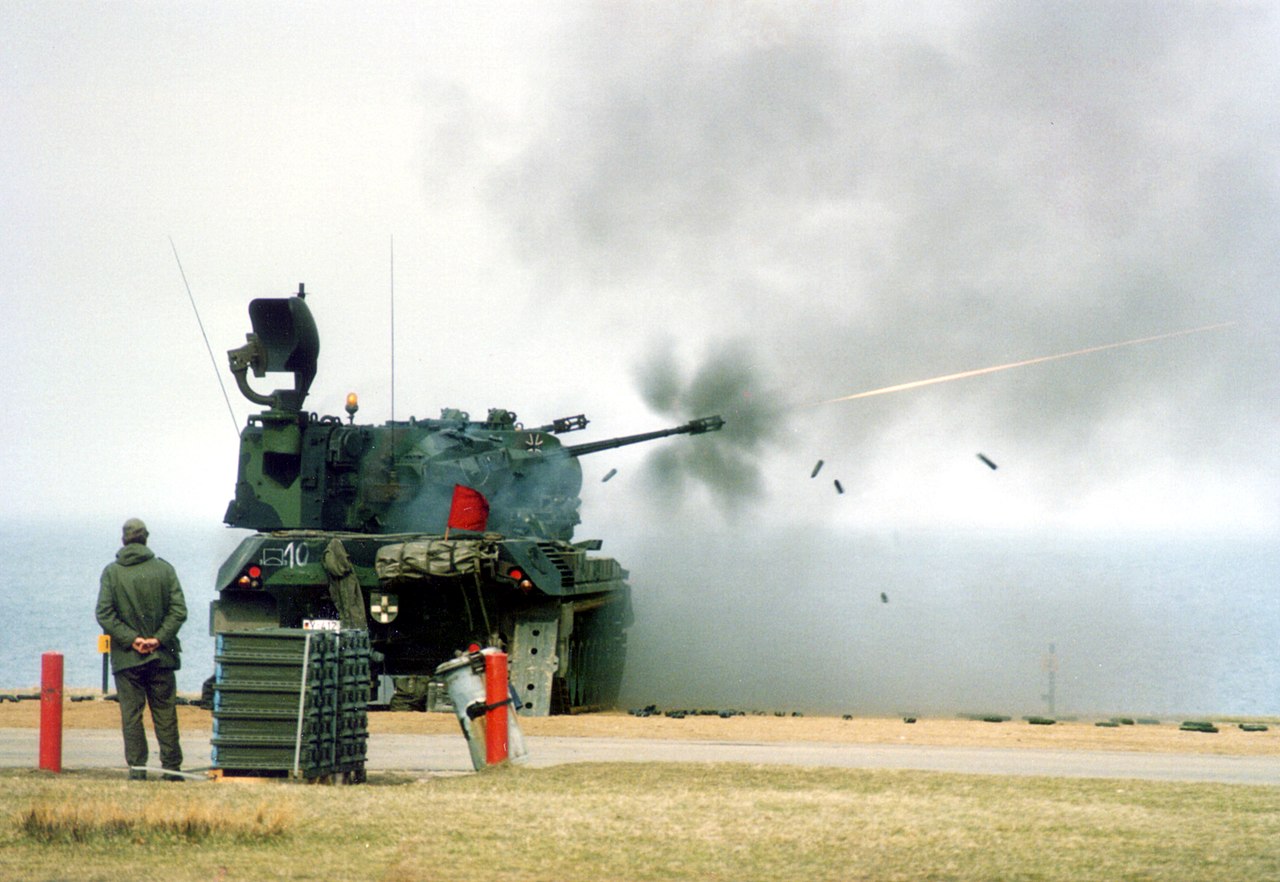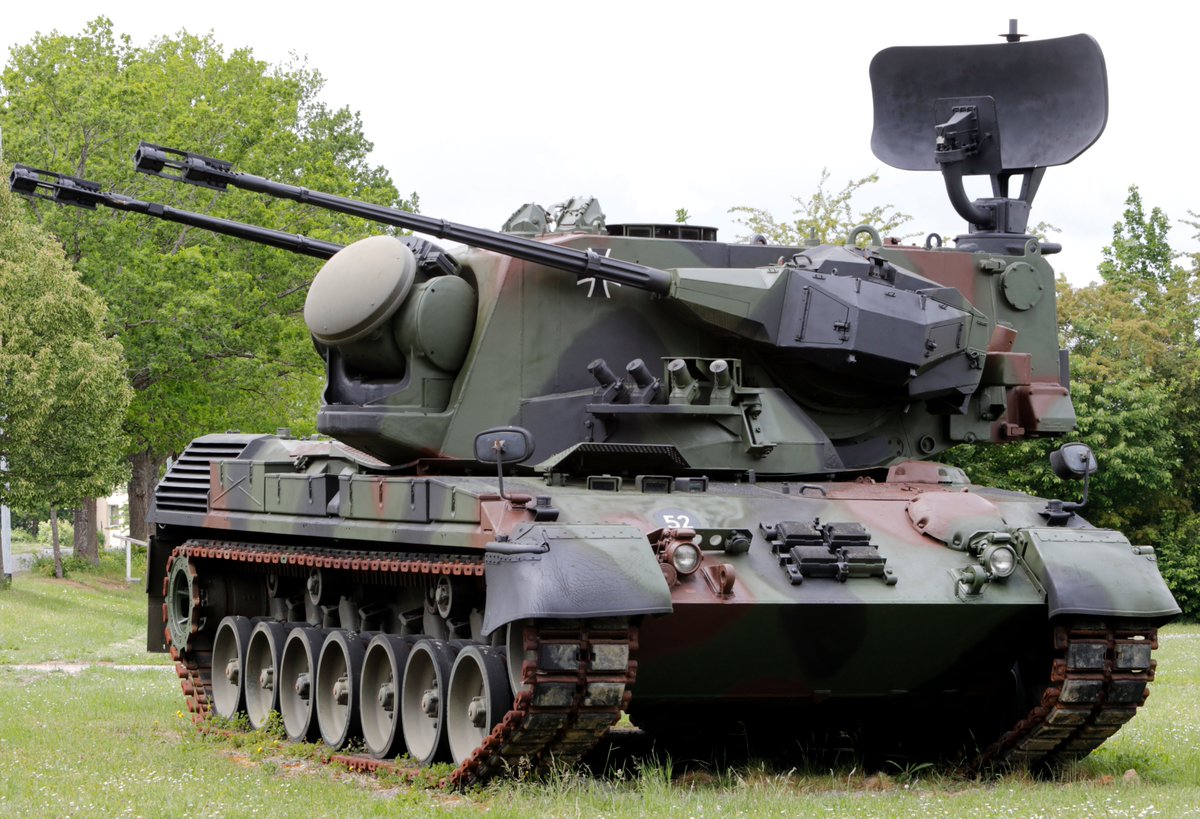
Commanders!
The third vehicle from the upcoming Eclipse Battle Path is quite famous and long-requested. Indeed, we are talking about Flakpanzer Gepard!

Flakpanzer Gepard
The history of the system goes back all the way to the early 1960s when the Federal Republic of Germany (West Germany) military, the Bundeswehr, deemed it necessary to replace the old American M42 Dusters in its service in their role of mobile close range anti-aircraft vehicles. The Duster, of course, was a relatively primitive machine with no real advanced features to speak of. What it had was a lot of firepower that allowed it to be brought out of retirement for the Vietnam War and used effectively against soft ground targets and slow fliers.
That, however, wasn’t really very useful for the Germans. At that point, the Soviets were still working on their Shilka SPAAGs but the mass-production of this iconic Warsaw Pact vehicle would start soon enough, in 1965. It’s not clear how much in advance the Bundeswehr was aware of this development but it does stand to reason that both militaries would think along the same logic lines and thus producing similar results.
In 1963, a program was launched by the Germans to develop a highly mobile self-propelled anti-aircraft gun armed with two (at least) 30mm autocannons. The vehicle had to be capable of keeping up with German mechanized units and therefore had to feature excellent all-terrain capabilities. At first, it was decided to utilize the early Marder IFV chassis (by then still in development) but it soon became clear that should the SPAAG include an advanced radar system, its weight would definitely exceed the limits of the Marder suspension.

Rheinmetall Matador
It was therefore decided in 1965 to switch to the Leopard 1 MBT chassis that was far more robust. The vehicle was co-developed between Siemens, AEG-Telefunken, Porsche, Krauss-Maffei and Rheinmetall, the last two of which would prepare two modified zero series Leopard 1 hulls and fit them with an early version of the Gepard turret. This early version featured:
- Two Oerlikon-Contraves 35mm autocannons
- B1 radar system by Siemens
- Important Leopard hull modifications including an additional power source and upgraded electric wiring (Daimler Benz OM 314 APU)
Against it stood a competing project by Rheinmetall called Matador, also installed on a modified Leopard chassis. This project was armed with two 30mm autocannons. Two Gepard prototypes were built and tested between 1965 and 1970 alongside the Matador while two more prototypes were built. In the summer of 1970, the competition was decided in Gepard’s favor and by the end of the year, four prototype vehicles were built. By 1973, five pre-production vehicles were ready for the Netherlands – the Dutch vehicles had a different radar system by Philips.
The official decision to arm the Bundeswehr with the Gepards was taken by the Ministry of Defense on February 5, 1973 with Krauss-Maffei as the general supplier together with Oerlikon-Contraves (weapons) and Siemens (radar).

Dutch Gepard
The production version weighed 45 tons, had a crew of three men (commander, gunner and driver) and was armed with two Oerlikon-Contraves 35mm KDA autocannons, each firing at 550 rounds per minute. The guns could elevate to +85 degrees and depress to -5 degrees. They were controlled by an analog computer at first (later replaced by the C3 digital system) and two radar systems:
- Siemens MPDR 12 360 degrees target acquisition radar (the rotating radar on top)
- Siemens-Albiswerk gunnery radar (the radar dish in front of the turret between the guns)
The German upgraded version B2L was also fitted with a laser rangefinder. The vehicle carried 700 rounds, 660 of which were high-explosive against flying targets and 40 rounds against ground targets. The HE round muzzle velocity was 1175 m/s and the maximum effective range was 4000 meters.
The turret armor was quite thin (we’re speaking of 19-21mm of steel) while the hull was roughly as thick as that of the Leopard 1 MBT. The MTU MB 838 830hp engine was the same as on the Leopard 1 as well, allowing the vehicle to go as fast as 65 km/h with the range of 550km.

Flakpanzer Gepard
Between 1976 and 1980, Germany received 420 Gepard SPAAGs (variant B2 and B2L) with the Netherlands receiving 95 vehicles with different radar. At the same time, Belgium received 55 ordered Gepards of the same type as Germany.
Estimated 147 vehicles were refitted to the Gepard 1A2 standard with an improved FCS and new programmable ammunition increasing the range to roughly 6km. Info about this variant is remarkably scarce. It can be recognized by different muzzle brakes and our model is based on it.
In Germany, the Gepards served for more than four decades before being officially withdrawn from service in 2010 and replaced by the Wiesel 2 Ozelot SPAAG. The final Gepard actually left the German service in 2012 as keeping such old hardware operational was deemed too expensive.

Flakpanzer Gepard
Likewise, the Dutch phased theirs out in 2006 and the Belgians did so around the same time and sold their Gepards to private hands. This led to several sales operations where other countries acquired this old but still relatively effective weapon.
In the December of 2004, 43 phased-out German Gepard systems were donated to Romania after the Romanians had successfully tested them in September of the same year. The donation included logistics and the training of 25 Romanian specialists. Of these 43, 36 were renovated by KMW while the remaining 7 vehicles were to be used for spare parts.
Another attempt to sell these off was made in 2008 to Chile with 30 Gepards being contracted. Four vehicles were delivered the same year but the Chileans found the operating costs a little too high to their liking and the remaining order was cancelled. Chile kept the four operational until 2011 when the military got rid of them.
Jordan purchased 60 ex-Dutch vehicles in 2013 with the delivery being made between 2014 and 2016. And finally, Brazil ordered 54 ex-German vehicles the same year and received them between 2013 and 2015. Qatar was interested in a certain number two years prior to the FIFA World Cup, but nothing came of it so far. And that’s it for the customers – well, paying customers, at least.

Flakpanzer Gepard
The only combat use of the Gepard SPAAG occurred relatively recently. Between July 2022 and today, Ukraine received 30 Gepards intended to be primarily used against drones targeting the Ukrainian infrastructure. Some Geran-2 drones (copies of the Iranian Shahed-136, also known as “flying mopeds”) were indeed likely shot down by the deployed Gepards and there has been at least one case where a Russian helicopter was engaged by a Gepard SPAAG. The Ukrainians claim to have used the Gepard against cruise missiles as well.
Germany is planning to supply Ukraine with 7-8 more Gepards in 2023 but is hampered by the Swiss embargo on its ammunition. Rheinmetall already promised to build a local ammo factory in Germany to bypass the problem so it seems this venerable machine still has some fight left in it.
In Armored Warfare, the Gepard will be a German Tier 8 Premium Armored Fighting Vehicle and a reward vehicle of the Eclipse Battle Path, obtainable by unlocking Level 19 of the Battle Path.
The Gepard will be a typical self-propelled anti-aircraft gun that will depend heavily on damage output and long spotting range rather than its armor or stealth. The vehicle’s hull will be similar to that of Leopard 1 and the manned turret armor will be steel-only so right off the bat it’s clear that this vehicle isn’t going to withstand a lot of damage. Of additional protection measures, only smoke grenades are present.

Click the image to open a larger version
On the other hand, you’ll have two decent, rapid-firing 35mm autocannons capable of powerful bursts that will tear down even medium-armored targets (in case it wasn’t obvious, the Gepard shouldn’t trade shots with MBTs, at least not in PvP). The combined rate of fire of 1200 rounds per minute is nothing to sneeze at, although we’re still tuning the firepower details in order to make the vehicle viable. Of interesting ammunition types, the Gepard will feature PELE-like FAPDS ammunition as a Workshop upgrade.
Mobility-wise, the vehicle will be identical to its Leopard roots – in other words, it’ll be similar to a slower light tank or a lighter MBT such as the Leopard 1A5. After all, with its 45 tons it’s not exactly a spring chicken.

Click the image to open a larger version
And last but not least, there are the camouflage and spotting range values. We are looking at 25% camouflage and 380 meters of viewrange although the latter will be possible to enhance via the Radar active ability similar to the one of the Draco AFV. And that’s pretty much it – just a solid vehicle for you guys to drive.
We hope that you’ll enjoy the vehicle and, as always:
See you on the battlefield!








